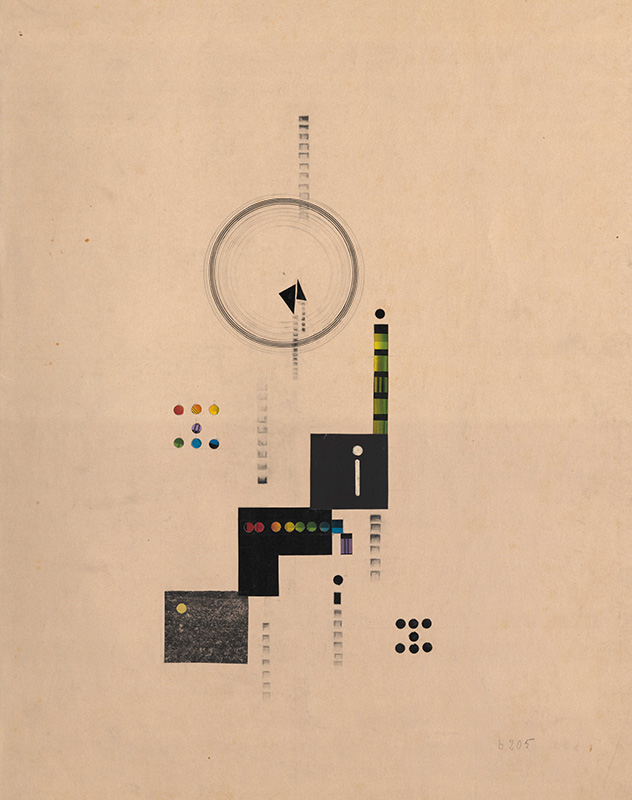
From water to light, from Dada to Constructivism – Ella Bergmann-Michel
Ella Bergmann-Michel – visionary artist of the German Avant-garde
Ella Bergmann-Michel was born in Paderborn in 1895 and studied from 1915 to 1918 at the “Großherzogliche-Säschsische Hochschule für Kunst und Gewerbe” in Weimar, which became Bauhaus in 1919.
She was an active member of the association “Das Neue Frankfurt” in the early 1930’s. She died in Vockenhausen the 8. August 1971.
Ella Bergmann-Michel was a graphic artist, photographer and film-maker. As artist she preferred paper as a medium and was passionate about science and technological progress.
From 1917 Ella Bergmann-Michel experimented intensively with material collages and assemblages. Bergmann’s assemblages surpassed the contemporary Berlin Dadaists’ works and anticipated the experiments of her friend Kurt Schwitters by two years.
She strived for a fusion of biological and technical matters. In the early 1920’s, she turned plants or figures to elegant machines. A dancing lady (Untitled B151, 1917) or a bleeding plant (Composition B 149, 1923) became strange floating robots.
Around 1923 Ella began to explore ways of representing the physical properties of light. She pasted cutouts of images taken from physics textbooks, combined them with ink lines and watercolor planes. Her interest for cinema and photography influenced her series of collages named “sphere pictures” or “Portraits de Rayon”. She played with transparency and surfaces in Sonne, Mond und B210, 1925. By positioning a biomorphic shape in a key spot, she questioned how nature can integrate into a technical world, resulting in a non-symbolic, lyrical-constructive use of light.
Category:
Exhibitions
Ella Bergmann-Michel, vue d’exposition De l’eau à la lumière, Galerie Eric Mouchet, Paris, 2022. Photo Cyrille Robin_1

Ella Bergmann-Michel, vue d’exposition De l’eau à la lumière, Galerie Eric Mouchet, Paris, 2022. Photo Cyrille Robin_9

Ella Bergmann-Michel, vue d’exposition De l’eau à la lumière, Galerie Eric Mouchet, Paris, 2022. Photo Cyrille Robin_7

Ella Bergmann-Michel, vue d’exposition De l’eau à la lumière, Galerie Eric Mouchet, Paris, 2022. Photo Cyrille Robin_6

Ella Bergmann-Michel, vue d’exposition De l’eau à la lumière, Galerie Eric Mouchet, Paris, 2022. Photo Cyrille Robin_5

Ella Bergmann-Michel, vue d’exposition De l’eau à la lumière, Galerie Eric Mouchet, Paris, 2022. Photo Cyrille Robin_8

Ella Bergmann-Michel, vue d’exposition De l’eau à la lumière, Galerie Eric Mouchet, Paris, 2022. Photo Cyrille Robin_4

Ella Bergmann-Michel, vue d’exposition De l’eau à la lumière, Galerie Eric Mouchet, Paris, 2022. Photo Cyrille Robin_3

Ella Bergmann-Michel, vue d’exposition De l’eau à la lumière, Galerie Eric Mouchet, Paris, 2022. Photo Cyrille Robin_2

EBM-33-2022-sans-titre-(b-205)

EBM-26-2022-Portrait-de-rayons


